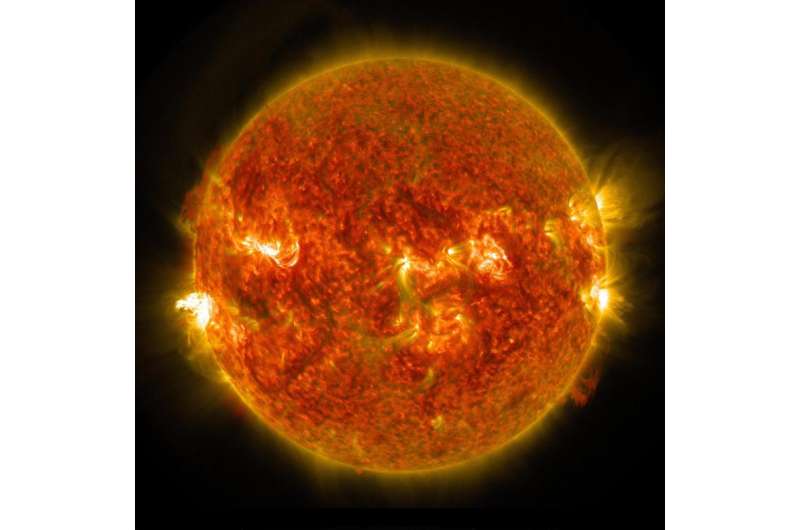Sun's impact on climate change quantified for first time

For the first time, model calculations show a plausible way that fluctuations in solar activity could have a tangible impact on the climate. Studies funded by the Swiss National Science Foundation expect human-induced global warming to tail off slightly over the next few decades. A weaker sun could reduce temperatures by half a degree.
There is human-induced climate change, and there are natural climate fluctuations. One important factor in the unchanging rise and fall of the Earth's temperature and its different cycles is the sun. As its activity varies, so does the intensity of the sunlight that reaches us. One of the key questions facing climate researchers is whether these fluctuations have any effect at all on the Earth's climate. IPCC reports assume that recent solar activity is insignificant for climate change, and that the same will apply to activity in the near future.
Researchers from the Physical Meteorological Observatory Davos (PMOD), the Swiss Federal Institute of Aquatic Science and Technology (EAWAG), ETH Zurich and the University of Bern are now qualifying this assumption. Their elaborate model calculations are supplying a robust estimate of the contribution that the sun is expected to make to temperature change in the next 100 years. For the first time, a significant effect is apparent. They expect the Earth's temperature to fall by half a degree when solar activity reaches its next minimum.
According to project head Werner Schmutz, who is also Director of PMOD, this reduction in temperature is significant, even though it will do little to compensate for human-induced climate change. "We could win valuable time if solar activity declines and slows the pace of global warming a little. That might help us to deal with the consequences of climate change." But this will be no more than borrowed time, warns Schmutz, since the next minimum will inevitably be followed by a maximum.
Strong fluctuations could explain past climate
At the end of March, the researchers working on the project will meet in Davos for a conference to discuss the final results. The project brought together various research institutions' capabilities in terms of climate effect modelling. PMOD calculated what is known as "radiative forcing" taking account of particle as well as electromagnetic radiation, ETH Zurich worked out its further effects in the Earth's atmosphere and the University of Bern investigated the interactions between the atmosphere and oceans.
The Swiss researchers assumed a greater fluctuation in the radiation striking the Earth than previous models had done. Schmutz is convinced that "this is the only way that we can understand the natural fluctuations in our climate over the last few millennia." He says that other hypotheses, such as the effect of major volcanic eruptions, are less conclusive.
Exactly how the sun will behave over the next few years remains a matter of speculation, however, since appropriate data series have only been available for a few decades and they reveal no evidence of fluctuations during this time. "To that extent, our latest results are still a hypothesis," says Schmutz, "and it remains difficult for solar physicists to predict the next cycle." But since we have been observing a consistently strong phase since 1950, it is highly likely that we will experience another low point in 50 to 100 years' time. It could be every bit as intense as the Maunder Minimum, which brought particularly cold weather during the 17th century.
Important historical data
The research project also placed great importance on the historical perspective. The Oeschger Centre for Climate Change Research at the University of Bern compared data series on past solar activity with other specific climatic conditions. People have been recording the number of sunspots, which correlates well with solar activity levels, for some three centuries now. However, it is much more difficult to quantify exactly how cold it was on Earth back then. "We know that the winters during the last minimum were very cold, at least in northern Europe," says Schmutz. The researchers still have a fair amount of work to do before they have a detailed understanding of the relationship between solar activity and the global climate both in the past and in the future.
More information: Future and Past Solar Influence on the Terrestrial Climate II. p3.snf.ch/project-147659
Provided by Swiss National Science Foundation

















